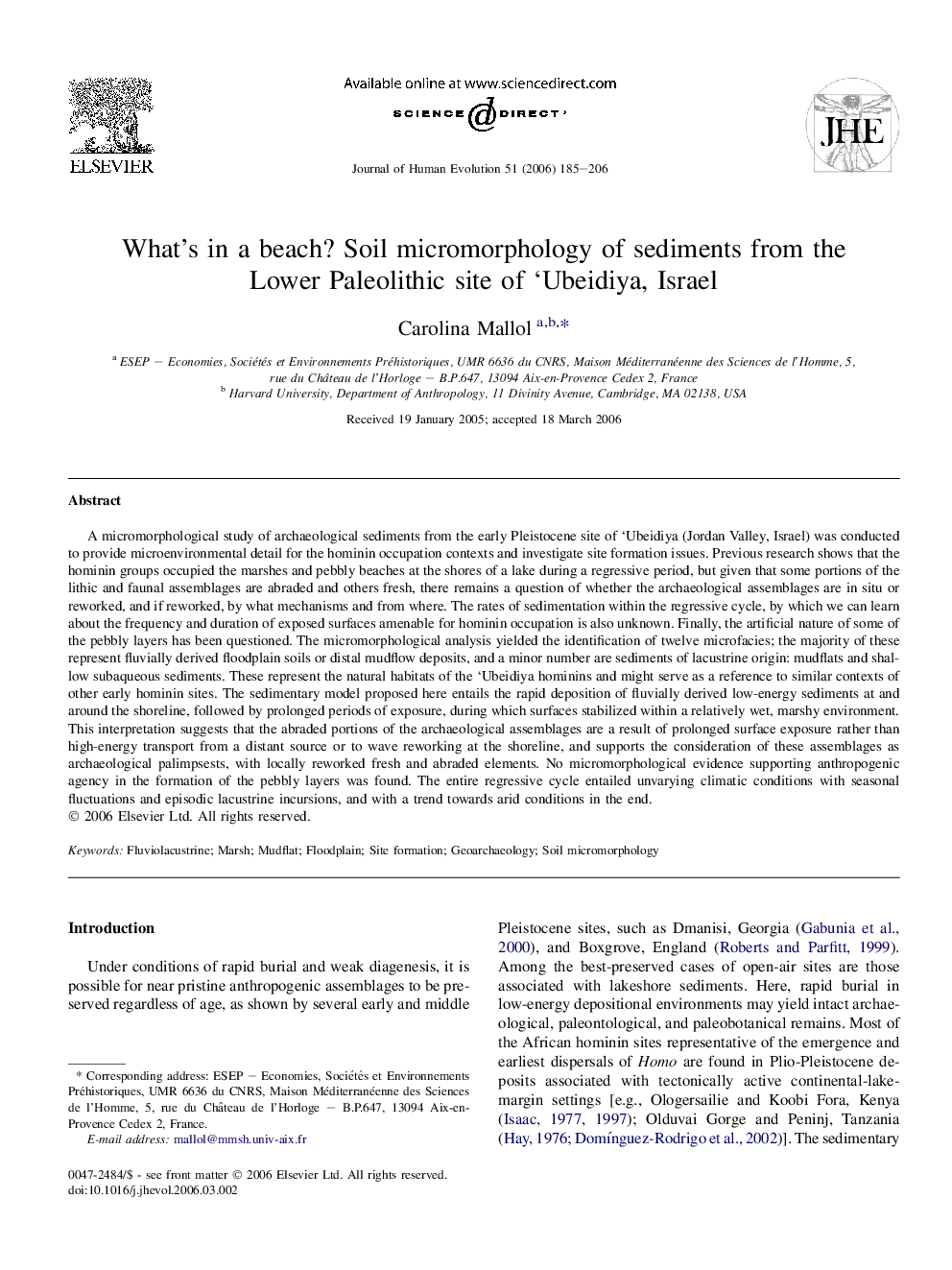| کد مقاله | کد نشریه | سال انتشار | مقاله انگلیسی | نسخه تمام متن |
|---|---|---|---|---|
| 4557211 | 1329534 | 2006 | 22 صفحه PDF | دانلود رایگان |

A micromorphological study of archaeological sediments from the early Pleistocene site of ‘Ubeidiya (Jordan Valley, Israel) was conducted to provide microenvironmental detail for the hominin occupation contexts and investigate site formation issues. Previous research shows that the hominin groups occupied the marshes and pebbly beaches at the shores of a lake during a regressive period, but given that some portions of the lithic and faunal assemblages are abraded and others fresh, there remains a question of whether the archaeological assemblages are in situ or reworked, and if reworked, by what mechanisms and from where. The rates of sedimentation within the regressive cycle, by which we can learn about the frequency and duration of exposed surfaces amenable for hominin occupation is also unknown. Finally, the artificial nature of some of the pebbly layers has been questioned. The micromorphological analysis yielded the identification of twelve microfacies; the majority of these represent fluvially derived floodplain soils or distal mudflow deposits, and a minor number are sediments of lacustrine origin: mudflats and shallow subaqueous sediments. These represent the natural habitats of the ‘Ubeidiya hominins and might serve as a reference to similar contexts of other early hominin sites. The sedimentary model proposed here entails the rapid deposition of fluvially derived low-energy sediments at and around the shoreline, followed by prolonged periods of exposure, during which surfaces stabilized within a relatively wet, marshy environment. This interpretation suggests that the abraded portions of the archaeological assemblages are a result of prolonged surface exposure rather than high-energy transport from a distant source or to wave reworking at the shoreline, and supports the consideration of these assemblages as archaeological palimpsests, with locally reworked fresh and abraded elements. No micromorphological evidence supporting anthropogenic agency in the formation of the pebbly layers was found. The entire regressive cycle entailed unvarying climatic conditions with seasonal fluctuations and episodic lacustrine incursions, and with a trend towards arid conditions in the end.
Journal: Journal of Human Evolution - Volume 51, Issue 2, August 2006, Pages 185–206